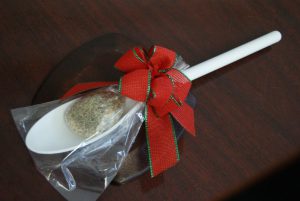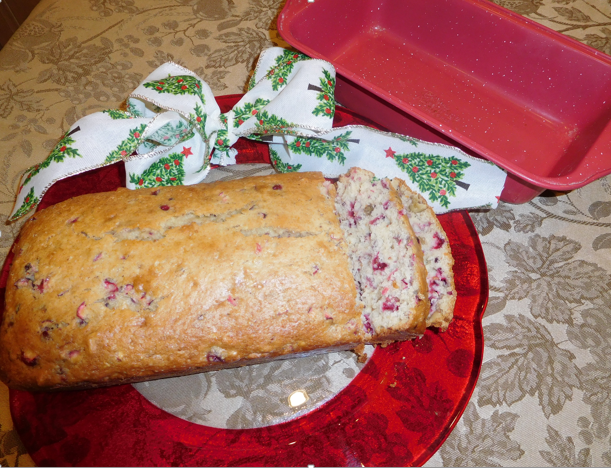
by juliannes | Mar 1, 2017
 We hope everyone had a wonderful Valentine’s Day last month and you had the opportunity to show a loved one that you care. But what about after Valentine’s Day?
We hope everyone had a wonderful Valentine’s Day last month and you had the opportunity to show a loved one that you care. But what about after Valentine’s Day?
Healthy communication is one way you can show loved ones, like your significant other, that you respect and value them on a daily basis.
According to the National Resource Center for Healthy Marriage and Families, healthy communication builds trust and friendship within your relationship. Healthy and effective communication also helps set realistic expectations. Unrealistic, unexpressed, and unfulfilled expectations are often the greatest source of unhappiness in a relationship.
So what makes communication healthy?
Dr. Victor Harris, UF Family and Youth Development Specialist, and Dr. Charlotte Olsen, Kansas State University Family Systems Specialist, have a few tips for healthy communication.
- Be clear, concise, and straight forward. If others can’t depend on you to tell them the truth, it damages trust in the relationship. If you think you will have trouble talking about a difficult topic with your partner, consider trying to write it down first to help figure out the best way to say things.
- Just the right amount of information. Think about the age and emotional state of the person you’re sharing with and share what they can process without being overwhelmed.
- Timing is everything. Be sensitive about when or when not to have certain conversations. If someone is sad, angry, tired, or stressed, that might not be the best time to talk about a sensitive subject. Set a time and place to discuss and opt for a “soft start,” using “I” rather than “You” messages that suggest blame.
- Listen silently. Listen silently without interrupting, but show through eye contact, head nodding, and facial expressions that you are listening. Allow the other person to finish what he or she is saying without jumping in — or jumping to a conclusion.
- Listen to find common ground. Try to look for points of agreement, rather than disagreement.
- Focus on positive interaction. It typically takes five positives to overcome one negative.
- Listen reflectively. Try paraphrasing what you have heard. This not only lets your partner know you’re listening, but it can help clarify misunderstandings. Consider your response before speaking, rather than blurting out the first thing that comes to mind.
- Be aware of non-verbals. Non-verbals can carry more weight than words. Looking away when a spouse or partner is talking to you or walking out of a room in the middle of a conversation are examples.
- Be willing to compromise. If personal spending from a joint account is becoming an issue, develop a budget in which each spouse or partner has a personal allowance that is his or her money to save or spend as he or she wishes.
- Be respectful — and appreciative. If both parties are tired, say “thank you” to the one who volunteers to go to the grocery store, fix a meal, or make life easier to ease the stress.
- Make “No Needling” the rule — not doing anything intentionally to irritate the other person. Be aware that sarcasm and putdowns can erode a relationship. Humor can break the ice, but it’s best to make fun of yourself, rather than another.
- Be spontaneous, particularly in making everyday opportunities enjoyable — and fun.
For more information on healthy relationships whether you’re dating, married, engaged, or even divorced, check out http://smartcouples.ifas.ufl.edu/.
by Melanie Taylor | Dec 5, 2016
As the holiday season quickly approaches many people become overwhelmed with all of the activities, decorating, and shopping that needs to be completed. Here are a few tips to save energy, time and your nerves.
 Let’s begin with 5 Steps to Seasonal Savings:
Let’s begin with 5 Steps to Seasonal Savings:
- Recognize Your Seasonal Stressors: Know your personal stressors—such as family, friends, work, travel, social outings and traditions (both old and new)—then you can be less stressed this holiday season. Marketing ploys sneak into every stressor, and retailers want to ensure they get their piece of the holiday pie by using marketing gimmicks to lure you into shopping with them. Do you find yourself with the overwhelming desire to get everything on your child’s list? If so, consider going without a list or setting limits, and communicate with your child. Often, parents do not involve their children in the holiday spending process. Children need help recognizing when and how they have been targeted and persuaded to want the latest and greatest item. Children also need to understand that a budget is necessary and saying “no” to an overpriced item is okay.
- Develop a Holiday Spending Plan—Make a Budget: Ask yourself: How much have I saved? How much can I save before the holidays? Am I comfortable creating debt? Am I comfortable saying “no”?Start with knowing how much you can spend and create a spending plan, which is critical for successful money management for the holidays and all year long. A few dollars from your paycheck each week adds up quickly over a year. You can also take advantage of weekly automatic transfers into your bank account, or join a holiday savings club at a local credit union. If your holiday budget shows you are spending more money than you have, then you’ll likely take on debt. If this is the case, you should also create a plan for paying off purchases made with credit. Prioritize your purchases and consider omitting purchases that require taking on debt.
- Develop a Holiday Spending Plan—Create a List and Stick to It: Make sure you have a list of everyone you plan to buy for during the holidays and of other additional expenses. Decorations, cards, postage, gift wrap, food/entertainment, and travel are additional costs that can drastically impact the holiday budget. Don’t forget to use catalogs, internet surfing for comparison shopping, and barcode scanning apps. Shopping online also limits impulse purchases, and it allows you to avoid long lines, huge crowds, and the lure to eat out while shopping. Be sure to use coupons whenever possible, and be sure to take advantage of the year-end sales. Once you’ve researched and set your budget, you’re ready to start shopping.
- Alternatives to Pricey Presents: If you have a large family, start by thinking outside the box. Consider a gift exchange by drawing names from a hat, which can allow you to put more thought than money into selecting a single gift. You can also buy a single gift for an entire family—perhaps an entertainment basket filled with DVDs and microwave popcorn. Oftentimes, thoughtful and more creative gifts can come from shopping with local businesses. Locally grown fruits and vegetables, honey, or an item from a local artist are just a few suggestions of local products. If you are feeling crafty, then you could make and give holiday arrangements such as centerpieces and decorations. Another idea for the holidays is to donate to a charity in someone’s name instead of gift giving. You can even take the idea of giving to charity to your office. Pool money you would have spent on gifts with your participating colleagues, draw a colleague’s name, and donate the money to a charity of his or her choice. Another gift idea for close friends and/or family is the “gift of time.” Create a coupon book or certificate that gives a loved one the gift of your time (a specific chore, a trip to the park, babysitting, slumber party for the kids).
- Fine-Tuning Your Financials: Use cash and/or debit cards when at all possible. Money coming directly out of your pocket will likely make you think harder about your purchase. If you are going to use a credit card, make sure you have a plan in place to pay it off when the bill is due. You also need to understand the allure of paying with credit. When you’re not paying with “real” money, your buying can easily get out of control, and the shopping process may not seem as painful in that moment. It may be appropriate to tell your older children how much they each have in the budget for holiday spending. When the family is on the same page, it can alleviate some stress. Refocus your family’s thoughts from the material goods to the real meaning of giving and receiving. Knowing your specific situation, making informed decisions, and communicating with loved ones can reduce the effects of holiday stressors.
Let’s take a look at some affordable and DIY Christmas gifts that will be truly appreciated by the recipient.
For the gardener in your life:
Terrarium Kit
Materials:
- One – 3 1/2″ x 7″ canning jar with top
- Small stones (enough to fill 1 inch in jar) You can buy pretty river rocks at your local garden shop or just collect some stones outside.
- A few tablespoons of activated charcoal (found at any pet store’s aquarium section)
- 1 small Ziploc bag
- 3 1/2″ x 5 1/4″ printed terrarium instructions card on card stock (download from witandwhistle.com or create your own)Step 2: Slide an instruction card into the front of the jar. Secure the card amongst the rocks. Step 4: If you’re feeling crafty you could add a decoration or two (plastic or clay mini mushrooms, insects, gnomes, fairies, etc.) in your terrarium kit.
- Step 5: Tie some twine or ribbon around the jar, and you’re done. You don’t even need to wrap it!
- Step 3: Pour a few tablespoons of activated charcoal into a small Ziploc bag and add it to the jar.
- Step 1: Put about an inch of small stones in the bottom of a jar.
For the spa lover in your life:
Basic Silk Bath Bomb
Materials:
- 1 cup Citric Acid (found in canning section of grocery store)
- 3 cups Baking Soda
- 1 teaspoon Essential Oil (purchase at local health food store)
- Witch Hazel Spritz (purchase in pharmacy section)
- Dry Pigment Colorant – if using
- Round mold to shape the bath bomb (Molds are round plastic ornaments found at your local craft store.)
- Directions:
- Blend the citric acid and baking soda—add colorant and fragrance oil.
- Spritz, Witch Hazel onto your batch using a squirt bottle with one hand while stirring with the other until the bomb sticks together when squished. (it will have the consistency of wet sand)
- Form the bomb in the molds.
- Air-dry for 3 or 4 hours spritzing a few times – allow to set overnight (The Witch Hazel forms a crust on the outside that prevents them from cracking and falling apart; however, they’re still fragile)
- Wrap in tissue paper or cellophane. Tie a bow and you’re done.
Other DIY ideas…homemade soaps, herb infused oils, jams and jellies, baked goods, hot cocoa mix, etc.
When we think of the holidays, we often think about family, togetherness, giving, and celebrating. While the holiday season should be a time of enjoyment, there are many events associated with the season that can cause stress. Remember, in the long run the memories will be of time spent together, not the gifts they received. So, be sure to plan ahead, take a deep breath, and enjoy the special holiday moments.
If you have further questions, please contact your local UF/IFAS Extension Office.
Resources:
“Five Steps to Seasonal Savings” – UF/IFAS EDIS Publication #FCS5267
“Managing Stress During the Holidays” – UF/IFAS EDIS Publication #FCS5266
witandwhistle.com
by Heidi Copeland | Nov 30, 2016
 Many of us can agree, being around family can make simple things in life more special! Whether it’s time spent together during holidays, celebrating birthdays, or simply enjoying togetherness, family events can make life memorable. Why wait until special occasions to show your family that they matter? Dining together can make simple things feel special every day!
Many of us can agree, being around family can make simple things in life more special! Whether it’s time spent together during holidays, celebrating birthdays, or simply enjoying togetherness, family events can make life memorable. Why wait until special occasions to show your family that they matter? Dining together can make simple things feel special every day!
Dining in with your family is one of the easiest ways to incorporate spending quality time together… on a daily basis. Knowing that schedules can make this task very difficult to implement but understanding the benefits will help encourage us to make the time for this important ritual. Research studies show that frequent, positive mealtime experiences can lead to better communication among family members, improved performance at school, and enhanced reading levels, as well as better overall nutrition. During meals, parents are able to teach their children how to actively listen and express themselves through conversation. As a result, these mealtime conversations expand children’s vocabulary and increase their reading skills. Equally important is that eating together helps encourage healthy eating habits.
Make plans to set aside December 3, 2016 as Dine in Day. This initiative, started three years ago by the American Association of Family and Consumer Sciences (AAFCS) promotes the importance of group meals in fostering family and community relationships, encouraging healthy diets and stretching food dollars. AAFCS cares about family mealtimes and is spreading awareness.
Here are some Dine In Day conversation starters and tips to create an enjoyable and relaxing atmosphere for your family:
- Start with minimal distractions. Turn off all devises…televisions, iPads, laptops, and set aside cell phones.
- For families with preschoolers here are some conversation starters
- If you could be any animal in the world for a day, which animal would it be? Why?
- What made you happy (or sad) today? Why?
- Who did you sit next to (or play with) at school today? What did you talk about?
- Would you like to help plan dinner for tomorrow night? What foods would you like to help cook for dinner?
- For families with adolescents and young adults here are some conversation starters
- Ask about their hobbies, clubs, or extracurricular activities
- If you could have one day free of all responsibilities what would you do?
- Share funny stories and discuss light current events
Remember, eating together matters. Try to create a positive atmosphere before and during meals.
- Respect and involve every family member giving everyone an equal opportunity to share an opinion without teasing or criticizing.
- Download free conversation starters at www.school-wellness.org
- Background music can be a nice addition!
Individuals, families and groups can pledge to dine in December 3 at http://bit.ly/2dPj58G . Diners can also participate on social media by sharing photos and using the hashtags #FCSdayFL and #healthyfamselfie.
Build stronger relationships and positively impact your children’s growing values. Don’t wait until special occasions to reap the dining together benefits, dine in now!
For more information on the importance of family meal
- Lyttle and E. Baugh, The Importance of Family Dinners (FCS2286), Department of Family, Youth and Community Sciences (Archived).
- Paredes and K. Shelnutt, Raising Healthy Children: The Importance of Family Meals (FCS8925), Department of Family, Youth and Community Sciences (06/2010).
Tamarah Ulysse FSU Intern, Family and Child Sciences
Edited by: Heidi Copeland
Extension Agent I
Family and Consumer Sciences
615 Paul Russell Road
Tallahassee, FL 32301-7060
850/606-5200
by Marjorie Moore | Nov 25, 2016
I don’t know about you but to me it seems we just finished shopping for the holidays and they are here once again. Holiday shopping can be a whirlwind and we forget to take time to stop and think about how much we have spent until the bills arrive. Having a budget for the holidays can be your best defense to not overdoing it this holiday season.
If you plan for the holidays, it can save lots of time, energy, and of course, money. It is important to prepare a budget, make the budget realistic and base it on your cash flow and financial obligations. Once your budget has been created, stick to it!
The next step – make a list of gifts you want to give. When shopping, use cash whenever you can as this helps you watch how much you are spending. When you have reached your budget limit, your shopping should be done! If possible, do not use credit cards to buy gifts. If you use credit cards, keep track of the amounts and stop when you have reached your budget limit.
Gift cards appear to be great but be aware of fees or usage terms that can reduce the value of the gift. Before buying gift cards, ask if the card can be used for online purchases. This may not affect most retailers but some online retailers do not allow using gift cards.
If you want to stretch your budget, you don’t have to purchase all of your gifts. Try making gifts such as food or give a coupon book volunteering your services (i.e. babysitting or yard work). Below is a mix ranch dressing recipe you can give to family and friends this holiday season.
To help with your shopping next year make your list early, then spread your shopping throughout the year.
Use these tips to help you enjoy your holiday.
Spoonful Mix for Ranch Dressing
2 tsp. dried parsley flakes
1 tsp. salt free herb seasoning blend
½ tsp. garlic powder
¼ tsp. dried basil leaves
- Mix all ingredients in small bowl.
- Place mix in to plastic wrap and attach to spoon.
- Decorate spoon with a pretty bow.
Ranch Dressing
Remove decorative wrappings from spoon, leaving the mix inside the plastic wrap and still attached to spoon.
- Empty ½ cup low-fat mayonnaise and ½ cup low-fat buttermilk into a medium bowl.
- Hold spoon over bowl and cut open bag of mix, allowing mix to fall into bowl onto mayo and buttermilk.
- Mix until very well blended (use gift spoon to mix). Refrigerate 30 minutes up to 8 hours to blend flavors.
For more information on holiday shopping, contact your local Extension office.
by Pam Allen | Nov 25, 2016
 It is that time of year when we think about giving special gifts to the people in our lives that mean the most to us. Your list might include teachers, neighbors, friends and co-workers. Gifts don’t have to be expensive, it is the thought behind the gesture that means the most to your friends and family. Whoever is on your list this year, think about using your kitchen as grand central for gift making. Gifts of food are heart felt and send a message that you spent time making something special that looks good and tastes yummy. These gifts say thank you in a thoughtful way. Don’t forget to include your kids in the process of cooking and assembling gifts to teach them something about budgeting and enjoying the simple pleasure of gift giving.
It is that time of year when we think about giving special gifts to the people in our lives that mean the most to us. Your list might include teachers, neighbors, friends and co-workers. Gifts don’t have to be expensive, it is the thought behind the gesture that means the most to your friends and family. Whoever is on your list this year, think about using your kitchen as grand central for gift making. Gifts of food are heart felt and send a message that you spent time making something special that looks good and tastes yummy. These gifts say thank you in a thoughtful way. Don’t forget to include your kids in the process of cooking and assembling gifts to teach them something about budgeting and enjoying the simple pleasure of gift giving.
The way the gift is presented can be just as important as the food itself. Try to pair up containers with the food gift that will be used after the food is gone. This can be a gift that keeps on giving. Examples are a decorative plate filled with cookies, pie plate filled with your favorite pie or a trifle bowl filled with goodies. You get the idea. Another thought is to put together items that say “sit and take a break” like a loaf of quick bread paired with a pound of coffee, homemade salsa with chips and a favorite beverage. The main goal is to show that you put thought in the gift and spent time preparing the presentation.
With everyone watching their budgets this year, plan ahead to get the creative juices working by purchasing ingredients on sale and found locally. Local products in December include pecans, sweet potatoes, honey, peanuts, persimmons, satsumas and jams and jellies sold at local farmers markets. So get going and unleash your creativity, and give a few gifts from your kitchen and your heart. Have fun making these gifts, and remember to enjoy the process.
One of my favorite festive cookie is the Chocolate Crinkle. The crackle on top with the chocolate and white sugar says it is holiday time. These cookies make a good food gift as they stay firm and will last up to a week. They also freeze well if you need to make ahead of time. Package the gift by placing on a nice festive plate and wrap with clear wrap and decorate with ribbon.
Chocolate Crinkle Cookie
½ cup of shortening
1 2/3 cup sugar
2 tsp vanilla
2 eggs
Two 1 ounce squares of unsweetened chocolate (melted)
2 cups sifted all-purpose flour
2 tsp baking powder
½ tsp salt
1/3 cup of milk
½ cup chopped walnuts or pecans (optional)
Cream together the shortening, sugar and vanilla. Beat in the two eggs then add the melted chocolate. In another bowl, sift together the flour, baking powder and salt. Add flour mixture slowly to creamed mixture alternating with the milk until thoroughly blended. Stir in walnuts. Chill for 3 hours. Form in 1 – inch balls and roll in confectioners’ sugar. Place on greased cookie sheet 2 to 3 inches apart. Bake in moderate oven at 350 degrees for 15 minutes. Cool slightly then remove from pan. Makes 48.
They are now ready to put in a container and give to friends. This cookie freezes well.
Prepare this nut bread then decorate with wrapping and ribbon. You might include the loaf pan as part of the gift. Include a brick of cream cheese along with a decorative butter knife for a complete package.
Cranberry Nut Bread
Ingredients
2 cups all-purpose flour
1 cup sugar
1 1/2 teaspoons baking powder
¾ teaspoon salt
1/2 teaspoon baking soda
3/4 cup orange juice
1 tablespoon grated orange peel
2 tablespoons shortening
1 egg, well beaten
1 tsp vanilla flavoring
1 1/2 cups Fresh Cranberries, coarsely chopped
1/2 cup chopped nuts (walnuts or pecans)
Directions
Preheat oven to 350 degrees. Grease a 9 x 5-inch loaf pan. Mix together flour, sugar, baking powder, salt and baking soda in a medium mixing bowl. Stir in orange juice, orange peel, shortening and egg and vanilla. Mix until well blended. Stir in cranberries and nuts. Spread evenly in loaf pan. Bake for 55 minutes or until a toothpick inserted in the center comes out clean. Cool on a rack for 15 minutes. Remove from pan; cool completely. Makes 1 loaf (16 slices). Bake loaf in decorative pan as part of the gift. Make sure you cool after cooking then replace in pan and wrap as part of the gift.
The Real Sweet Potato Pie
Use local sweet potatoes to promote locally grown produce. After baking, cool then give as a gift in a nice pie plate. Wrap, refrigerate with instructions on reheating for serving. For added effect, bundle with whipped cream and pie knife.
Pre Preparation
Prepare your sweet potatoes for the pie mix. Select 6 – 7 large sweet potatoes and cut in half or quarters. Boil potatoes slowly for about 30 minutes. Let cool. Peel potatoes after they cool. The peel should come off very easy. Measure six cups of sweet potato in a mixing bowl. Use a stand mixer to beat the sweet potatoes and do not scrape off any mixture from beaters. This will contain the stringy part and you do not want it in your pie. Discard the strings.
Ingredients
6 cups cooked mashed sweet potatoes
1 cup evaporated milk
½ cup butter
2 tsp vanilla flavoring
2 tsp nutmeg
1 tsp butter flavoring
4 eggs
1 cup sugar
Mix all ingredients in a stand mixer until well blended. The mixture should be smooth and free of lumps. The mixture will keep in the refrigerator up to a week and may be frozen for future use. Be sure to label with date and amount before placing in freezer.
For the Pie
Place mixture in unbaked pie shell and smooth to the edges. You will need about 2 ½ cups for each 9 inch deep dish pie shell. Mini tart shells may also be used for individual pies. This recipe makes about 3 pies or 12 individual mini pie tarts. Cook at 350 degrees until puffed and browned slightly on top. About 40 minutes.
Visit your local farmers market to purchase local nuts, honey, produce and jams and jellies. Be sure to look for locally grown and support our area growers. For additional information about local produce visit: http://wfrec.ifas.ufl.edu/panhandle-produce-pointers/

by Marie Arick | Nov 17, 2016

The holidays are fast approaching! Pause long enough to avoid the pitfalls of overspending. Budgets are always tight during holidays. Gifts are not about the cost, rather they are a display of the true relationship of the people involved.
Gift giving at its finest is a true art form. I have a dear friend who really captures the essence of each person with each gift she gives. Gifting is a statement that demonstrates how important the receiver is and how they are perceived in the giver’s eyes.
Always consider the occasion and the relationship with the receiver. It is also important to know the receiver’s culture as to be certain not to offend. A gift given as an afterthought usually displays just that – it was not originally intended to be given. This is not generally the intention of the giver but can give this impression. Additionally, if you intend to re-gift an item, be certain the item meets the personality of the receiver. Re-gifted items tend to be unusual or offbeat, so think hard before taking this path.
Consider practical, useful gifts that match the person you are shopping for. The idea of gifting a need, a want, a clothing item, and a literature item to a person has been one of the most recent trends. Very few people buy that many gifts for those outside of their immediate family. But, this could be applied to others by just taking one of the options. If they are a reader, consider a gift card to a local bookstore instead of a specific title. This provides the option of an e-book or print version. Or, clothing could come in the form of a nice scarf or other accessory that is a part of their usual style.
A gift is a statement of caring. For each person, this is different. Take the time to consider personality, hobbies, interests, and activities. Choose a gift that matches one or more of these considerations. This lends to the true purpose of gifting – to show the receiver how much they mean to you.

 We hope everyone had a wonderful Valentine’s Day last month and you had the opportunity to show a loved one that you care. But what about after Valentine’s Day?
We hope everyone had a wonderful Valentine’s Day last month and you had the opportunity to show a loved one that you care. But what about after Valentine’s Day?






